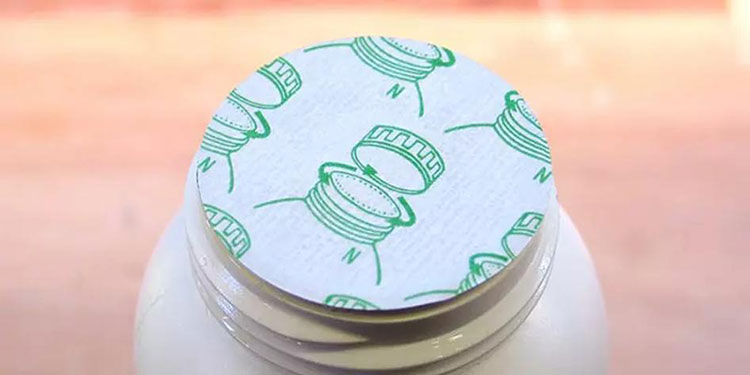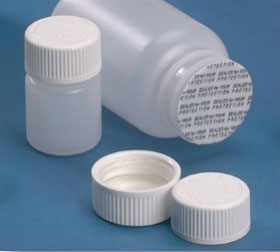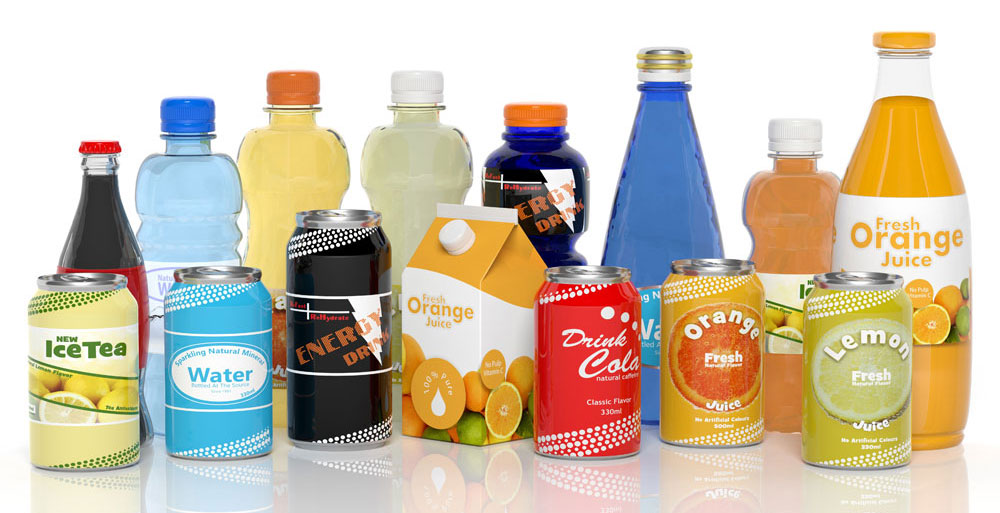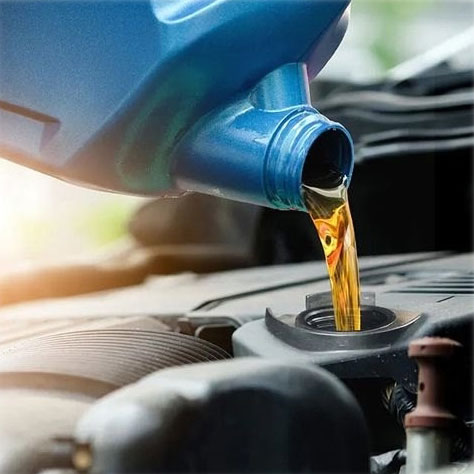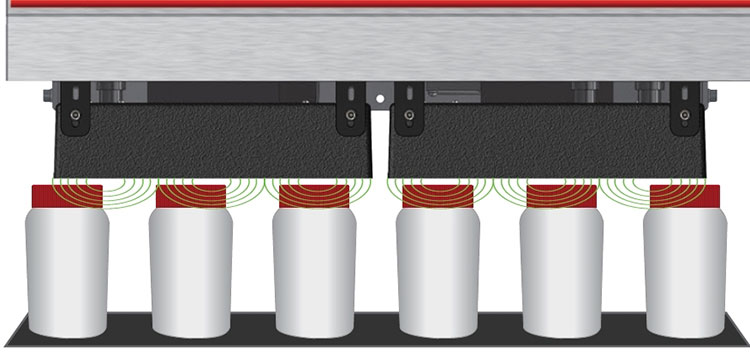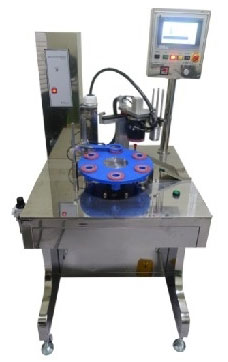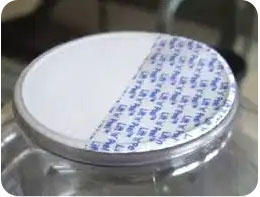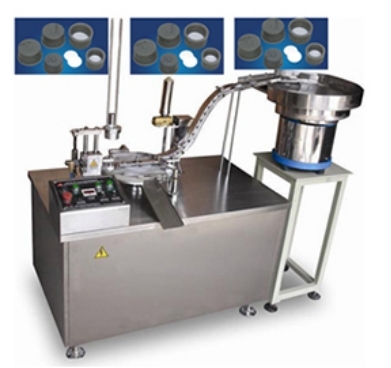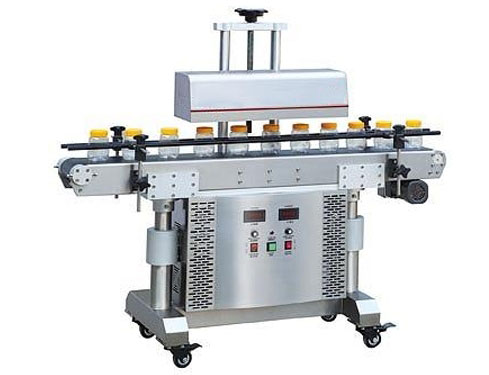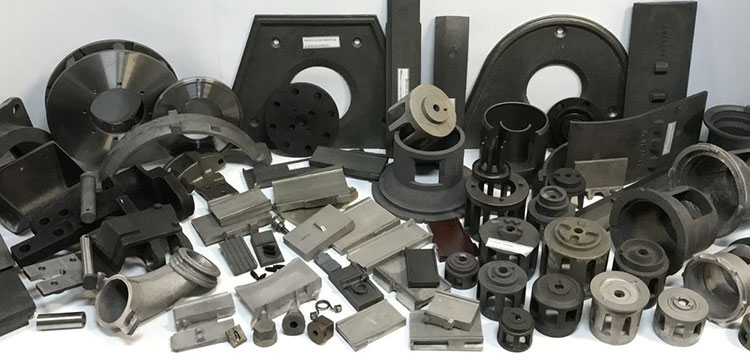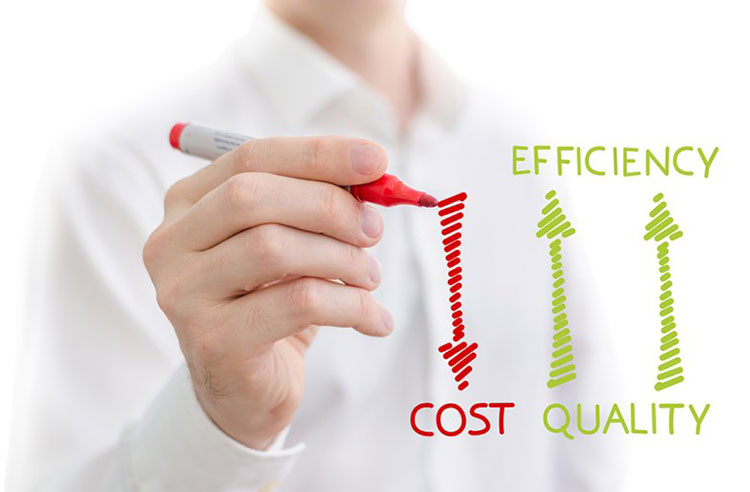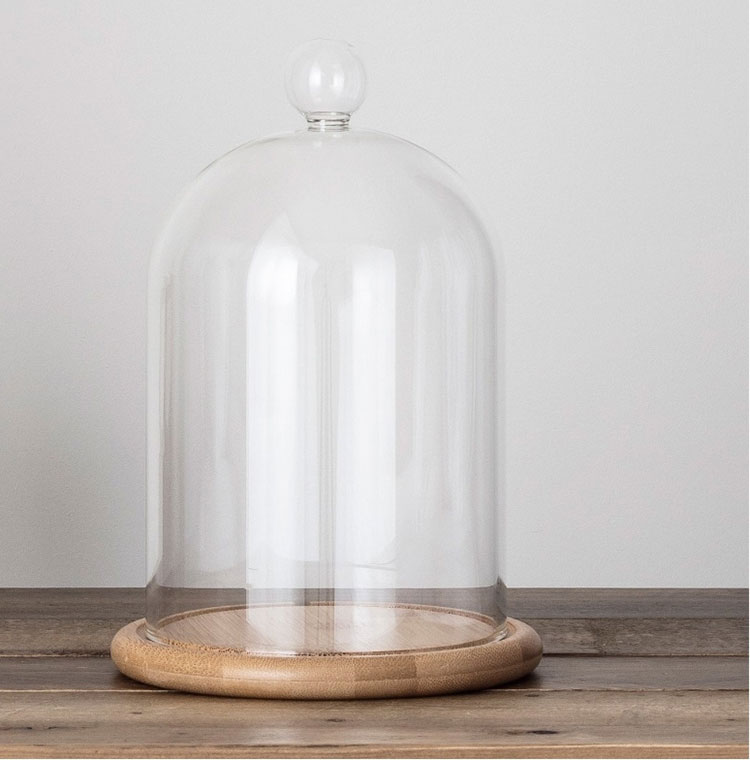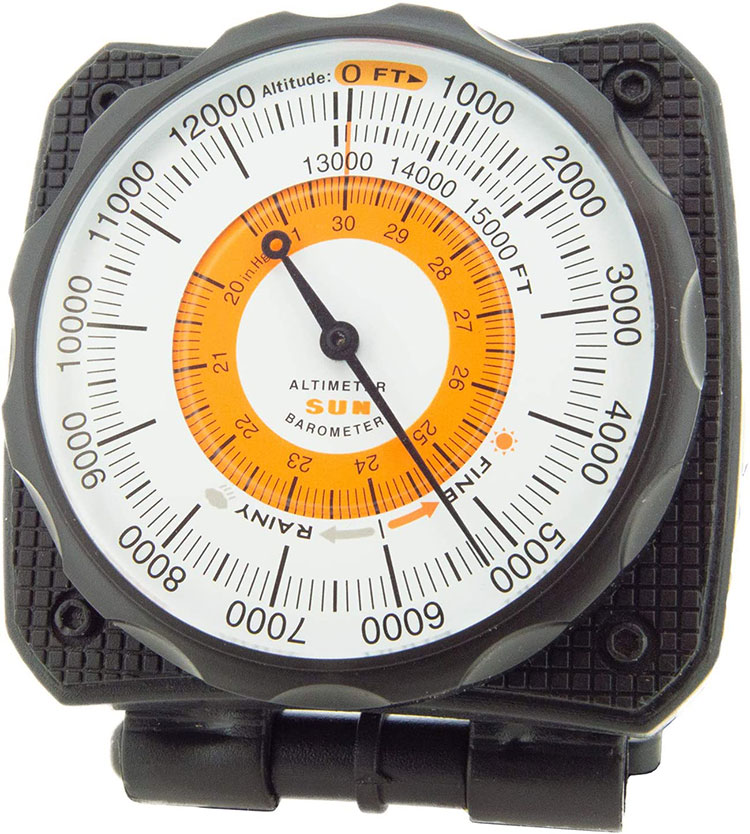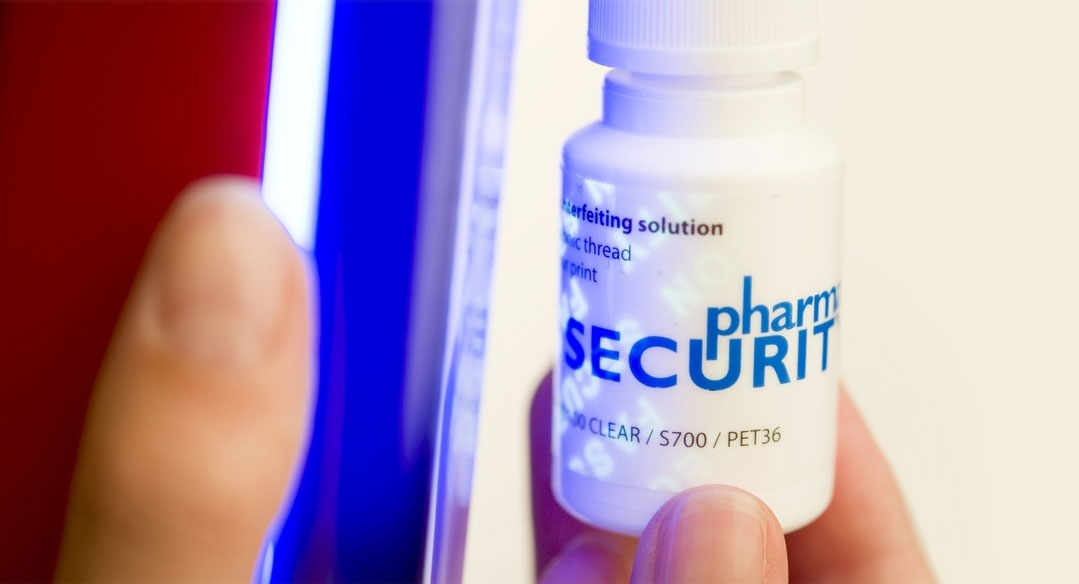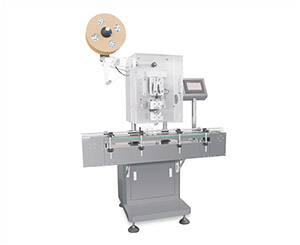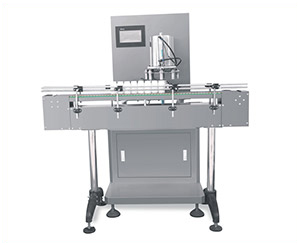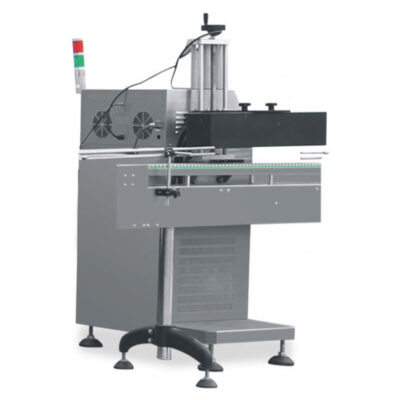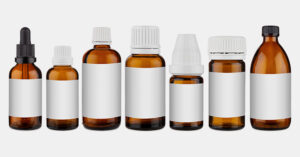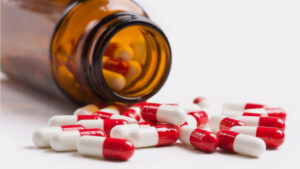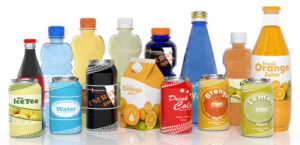Induction Sealing Machine:The Complete Buying Guide in 2025
Induction Sealing Machine- An Indicator of Product Safety!
When you take a bottle of tablets for the first time you may notice a cap to twist off, followed by a flat disc of foil just before ripped away to get into the tablet’s underneath.
That flat disc of foil is an example of ‘induction sealing’ which is certainly attained by induction sealing machines.
Do you know…The use of induction sealing is an indicator of stable and safe packaging?
SO!
If you find a new bottle with a broken seal, it must cause concern.
The induction sealing machine is an effective way to facilitates lightweight sealing over the product. This method is efficient to preserve the freshness, leakage and demonstrates clear evidence of tampering.
In some cases, such as food and beverages, the sealing of products should have to pull away because the content of food particles may stick to sealing which is a possibly unhealthy and unpalatable way of storage.
The induction sealing machine is a popular and widely used process to seal a variety of manufactured goods like pharmaceuticals, food & beverages, industrial, agrochemical, household chemicals, and so on.
You may find a specialized sealing induction that is very difficult to pull away hence tampering is extremely obvious. Because you cannot work off and re-apply the sealing without a noticeable difference.
This technique requires a high degree of coordination due to the association of various variables. Though this technology is an emerging way that is concerned with the leading industries of the competitive market as every producer is concerned with the safety, integrity, and quality of their products.
Induction Sealing- Picture Courtesy- MERO
Certainly, induction sealing machines provide you with a solution to protect your product. Every induction sealing machine is developed in a way to give a reliable and rugged output.
In the past few years usage of aluminium foil has become more and more popular in the field of beverages and medications.
To assure the freshness and efficacy of their products manufacturer are always obliged to utilize an excellent barrier material which can refrain the entry of oxygen, moisture, and light to get in with contact product ingredients.
The sealing itself is applied inside the cap made up of aluminium foil which is often held on the top of the bottle with a layer of wax, glue, or paper.
Underneath you will find a layer of polymer film that seals aluminium to the bottle’s opening. So, once the containers are capped, they are pass by under an induction coil. This induction coil heats the aluminium foil which can simultaneously release and stamp the foil onto the bottle. This passing of the bottle under the induction coil is achieved manually via a handheld device or high-speed conveyor belt.
Today majority of the system is water-less or air-cooled which takes up to half-space as compared to older systems.
Therefore, producers are always seeking to use well-acknowledged induction sealing machines that provide brilliant outcomes with the highest reliability.
Once you decide to have your induction sealing machine set up. Then, you are at the right place, in this blog you will find out essential guidelines to use induction sealing machines for your products.
Not only this!... you’ll find useful tips, information, and product security recommendations before purchasing this machine.
So, let’s start it!
1.What is an induction sealing machine?
An induction sealing machine is also known as a non-contact heating machine. It achieves a hermetic sealing of bottles with a cap comprised of heat-sealable material such as laminated aluminium foil.
A typical induction of inner sealing is accompanied by multi-laminate liner present within a cap of the bottle such as a layer of wax, pulpboard, adhesives, polymers, and so on.
AIPAK Induction Sealing Machine
An induction sealing machine is commonly employed on non-metallic sealing bottles such as plastic, or glass. Induction sealing machines are involved in various applications of industrial setup but commonly use for product sealing.
An induction cap sealer is used to seal the head of a container. induction sealing machines work by a non-contact mechanism. Heat is employed to the inner seal of aluminium foil via electric coils. As you know aluminium foil is an ideal substance for electric conduction. Therefore, an inner seal of the cap gets firmly seal around the neck of plastic or glass containers.
Induction sealing machines are applied to seal bottles with sensitive active ingredients, hygroscopic substances, granules, liquids, sprays, or powdery substances, or original packaging materials for shipments such as bags, blisters, boxes, or cartons.
2.Can you explain the importance of induction sealing machine for pharmaceutical product safety?
The major importance of induction sealing machine at pharmaceutical system is as follow:
1) Leakage Prevention:
Induction sealing machines provide a perfect sealing of material that is especially required for liquid substances to be packed for various purposes. For instance, oil, medicines, chemicals, and so on.
The use of induction sealing machines can save your product from damage or leakage.
2) Fragrance Retention:
We love those products that give an excellent and refreshing aroma upon unsealing them.
Yes! In this case, induction sealing machines play a high extent quality job. A multi-layered sealing around the product retains the fragrance and product in its original form. Therefore, it refrains those factors that affect the product quality until the product is consumed by the end-user.
3) Preserving active ingredients:
Whenever we get pharmaceutical or chemical products, it contains some special active ingredient for some beneficial purpose. These active ingredients are very sensitive to the physical environment such as light, humidity, temperature. So, it is mandatory to preserve them for their specific use.
Induction sealing machines assure you to provide a perfect sealing of product to preserve your active ingredients.
4) Originality of the product:
An induction sealing machine is promising equipment that sustains your product originality for a longer period. Since it keeps away all detrimental parameters that aid to incorporate unwanted pollutants into your product. Therefore, you will get 100% active and preserved content that stays fresh for a longer time.
5) Broadens the shelf-life:
An induction sealing machine can help to preserve your product to stay fresh without any extra artificial ingredients as well as preservatives. The sealing procedure may induce a longer shelf life for your product.
6) Offers the tamper evidence:
You can easily have an idea about the purity of the product upon seeing the bottle packaging.
Because, if the seal tampers, you can simply notice that somewhat wrong has happened. Thus, sealing can allow you to decide whether buy the following product or not. The use of an induction sealing machine prevents your product from pilfering and convinces the consumer about the integrity of the product when you find intact sealing.
7) Prevents product contamination:
Induction sealing machines offer airtight packaging and 100% high protection against environmental factors. The induction cap sealing technique can enhance the sealing capacity and minimize waste. Also, induction machine packaging can sustain an aesthetic look to your products.
3.What industrial sector frequently requires induction sealing machines?
Induction sealing machine encompasses with broad industrial sectors, such as:
1) Pharmaceutical Industries
Pharmaceutical industries frequently need the utilization of advanced standard packaging machines for product delivery with basic regulatory compliance. Induction sealing machines assure safe, protected, and tampered-proof pharmaceutical preparations.
Induction sealing machines offer the package of pharmaceutical drugs that are just hassle-free from unwanted contamination, lowers the risk of microbial growth, and assure an extended shelf life.
An induction sealing machine is an essential tool that meets an international standard of regulatory compliances and offers safety to your formulation.
Induction sealing machine not only confirms the durability of products but also complements an aesthetic value that fundamentally enhances the value of products.
Application
- Tablets, syrups, capsules, soft gelatine, effervescent tablets
- Energy drinks, vitamins, nutritional supplements
- Topical applications such as ointments, creams, etc
- Herbal supplements
2) Beverage Industry
Induction sealing machines play an important role to preserve food and beverages prepared on an industrial scale. It may offer leak protection, longer shelf life, fragrance, freshness, and pilferage defence. The inner seal aluminium foil significantly helps as a barrier that firmly locks the freshness and refrains the probability of humidity. Thus, you do not need to add any preservatives to your food product.
An induction sealing is ideal for those consumers who prefer to consume organic foods and drinks. Because sealed products can preserve their food throughout the distribution process from unwanted air pollution and various kind of contamination.
Applications
- Ketchup, honey, jams, juices
- Spices, pickles, aromatic water
- Dried fruits, cheese, mayonnaise, oils
3) Chemical and Cosmetic Industry
Induction sealing machine is the latest technology of the modern era that is preferred globally by cosmeceutical and chemical industries for safe, secure packaging and delivery of their products.
Moreover, induction sealing machines ensure high-quality, efficient sealing, that protects ecological and biological system via interacting with harmful chemical products. Similarly, it is widely used in cosmeceutical manufacturing to extend product shelf life and efficacy.
Counterfeiting has been a key concern for leading petrochemical and agrochemical industries. Thus, an induction sealing machine is widely used anti-counterfeiting equipment almost everywhere in the world.
The sealable used for sealing purposes is made up of PVC, ABS, plastic tube, wax, and so on. Therefore, an induction sealing machine is certified technology that ensures the safety of the product and environment.
Application
- Fuel additives, car wash, lubricants, engine oils, grease
- Pesticides, enzymes, herbicides, etc
- Shampoo, hair gel, body washes, hair oils, lotions, etc
4) Dairy Sector
Dairy products are consumed widely on daily basis across the globe, and packaging is of prime importance.
Conventionally, milk packaging was done by using glass bottles. But now, by emerging modern innovation use of induction sealed plastic jars, and bottles employed to provide fresh and flavored milk to consumers. Moreover, dairies are significantly utilizing induction sealing machines to deliver cheese, butter, and liquefied butter (ghee) with confidence. The packagers use lightweight containers and jars that is indeed a cost-effective way of delivering a quality product.
Application
- Fresh milk, tea, whiteners, milk powders
- Ghee
- Butter, yogurt, flavored yogurt, cheese
4.Do you know the working principle of sealing induction machines?
Induction sealing machines utilize induction of heat to achieve sealing of containers. The induction of heat is achieved electrically by a conducting object. For instance, a machine encompasses an electro-magnetic induction and with the help of eddy currents, heat is generated.
Induction Sealing Machine Working Principle
An inner seal is used over the container which is generally made up of PVC, ABS, polythene, and thermoplastic material. An excellent induction sealing needs a fine neck finishing.
An induction sealing machine works by the principle of conduction. For example, the heating of aluminium foil takes place via a high-frequency magnetic field produced by an induction unit. The whole route is a non-contact process that does not involve direct heat.
Working of induction sealing machine- Picture courtesy - Enercon
A multi-layer sealable closure is consisting of a sealable film, wax, and aluminum foil. Soon after the capping of a container, it passes over the induction unit. The induction unit develops heat which results in the warming up of aluminium layers as well as other materials.
So, wax begins to melt and attempt to penetrate the board layer. The entire sealing layer melts and develops firm sealing against the opening of a container.
Thus, when you open the container, you will find permanently sealed aluminium foil surrounds the rim of the container.
5.What is an aluminium induction sealing liner?
You have possibly seen a firm covering over bottles and jars before use, such as margarine, medicines, peanuts, etc. That covering is made up of aluminium foil sealed by an induction sealing machine. This aluminium foil over the container also ensures that the following product is tampered evident.
A typical aluminium sealing liner is made up of the following strategically designed layers:
- An aluminium foil
- Polymer
- Wax
&
- Pulp paperboard layer
A) Topmost Layer: this layer is made up of pulp paperboard which sticks against the cap and glued to it.
B) Second Layer: this layer is followed by wax that binds to pulp paperboard and the other side attaches to aluminium foil.
C) Third Layer: this layer is followed by an aluminium foil, which is a prime heat conducting body. It helps to transfer heat molecules toward surrounding layers and allows firm sealing of containers.
D) Last Layer: this is a bottom layer that looks like a plastic film made up of polymer.
These four layers combine to attain the required dynamics for a successful induction procedure to get an airtight seal.
Aluminium induction sealing liner- Picture Courtesy- Leadmens
6.What are the major classifications of an Induction sealing machine?
An induction sealing machine has a broader classification that is based on equipment properties, designs, batch size, and functions. For instance:
1) Continuous Induction Sealing Machines:
This machine is mainly used in a medium or large-scale production unit. They are suitable for non-metallic bottles with threaded plastic closures, or glass bottles. A continuous sealing is not a preferrable option for those containers that stores acids, alkaline solutions, or harsh chemicals such as pesticides for a longer time.
Continuous Induction Sealing Machine- Picture Courtesy- Indiamart
This machine utilizes an electrochemical principle and generates instant heat that capable to melt and seal aluminium foil. All features of the continuous induction sealing machine comply with GMP standards.
Some important advantages of continuous induction machines:
- Easy operation
- High-level sealing efficiency
- High frequency and quick sealing
- Adjustable speed
- Safe and reliable
- Preferable for mass or bulk production.
1) Semi-Induction Sealing Machines:
Technically semi-induction sealing machines are similar to continuous induction sealing machines. This machine is capable of driving smaller units to the bulk of sealing containers with a seamless workflow.
Semi-induction sealing machines are also suitable for sealing metallic bottles/containers. Although this sealing is not appropriate for the longer period and intense physical conditions such as light, humidity, dust, or high pH.
Semi- Induction Sealing Machine- Picture Courtesy- Indiamart
This machine works at a faster speed, simple to install, and does not requires high maintenance.
Some important advantages of semi-induction sealing machines:
- High strength with stainless steel structure
- Simple and sophisticated
- Robust and reliable
- Power cut memory which regulates electricity supply
- PLC control system
3) Manual Induction Sealing Machines
The manual induction sealing machine is based on manually driven procedures.
This machine is ideal for those consumers who deal with small-scale sealing containers and need a low working turnaround. Although this machine follows manually working procedures, it carries many benefits. For instance, if you require an induction sealing machine for a smaller production unit, then this machine is ideal for you as it is suitable for relatively smaller batches.
Manual induction sealing machine
Most often buyer does not have sufficient budget to purchase high equipped induction sealing machines. In this case, manual induction sealing machines are cost-effective as their worth is very low and affordable for a small industrial scale. Also, manual induction sealing machine is the ultimate best solution as it consumes moderate electric power that every manufacturer cares for.
If you examine the bottle sealing speed, it ranges between 0.2 to 2second which is mainly dependent on the type of material and machine. Therefore, it has been observed that manual induction sealing machines' speed production can be covering up to 360 containers for every hour. You can use this machine for serving foods, chemicals, and pharmaceuticals easily.
4) Capless- Induction Sealing Machines
Are you looking for sealing product without a lid?
Capless induction sealing machines provide hermetic sealing straight away onto containers, vials, and closures.
Though machine can punch the sealing matter straight on an assigned position.
Technically, capless induction sealing is a complicated process as compared to other sealing procedures. Capless induction machines attribute numerous benefits.
For instance:
- It enables you to monitor the seal.
- It is preferred to seal those containers that store high-temperature content.
- It allows a smooth and aesthetic sealing around the container as compared to cap sealing. Because rubber in the sealing head allows the foil to adhere tightly to the mouth of the container. Thus, this is a cost-effective sealing as it does not require caps and liners.
A Cap-less Induction Sealing Machine- Picture Courtesy- Kompass
This machine is already being frequently used to seal a wide variety of products across the globe. For instance, the food industry (sealing sauces, food items, etc), the pharmaceutical industry (injectable and topical preparations), cosmetic industry (face masks, lotion, etc).
It is comprised of a reel of foil that can sophisticatedly pass by a cutting die which is made up of ceramic.
The cutting of foil is being driven according to the required shape. Then a foil is held onto the container and with the help of a vacuum, pressure punching is achieved.
Then heating with concurrently cooling of foil at a high speed helps in creating a super tight and safest seal around the container.
5) All-Purpose- Fully Automatic Aluminium Foil Induction Sealing Machine
Automatic aluminium foil induction sealing machine encompasses the sealing properties of all equipment from this class.
For instance,
- Capless induction sealing machine
- Manually operated aluminium foil sealing machine
- Conveyor type induction sealing machine
- Foot-operated induction sealing machine
Automatic Aluminium Foil Induction Sealing Machine- Picture Courtesy- LevaPack
This class of machine is commonly applicable at production units of pharmaceuticals, cosmetics, food and beverages, chemicals, and non-metallic container packaging industries. Moreover, this machine can efficiently seal all various sizes of containers.
You cannot use this machine to seal metallic containers or bottles.
Since this machine can seal containers, bottles, or vials with aluminium foil, it is also known as:
- Aluminium-can Sealer Machine
- Aluminium can Seamer Machine
& Aluminium Sealer Machine
Moreover, this class of machine is broadly available in the market in different sizes, designs, and specifications. Thus, you can independently opt for a machine of your choice. This machine complies with all mandatory GMP standards. The structure of this machine is developed with stainless steel that facilitates a smooth operating system.
7.What are the main components of an induction sealing machine?
Although induction sealing machines are available in different designs and forms.
From a hand-held manual machine to a deluxe unit of a larger production machines, two main components are the same for all types.
A) A seamer head
B) A power supply
Without these major components’ induction sealing machines can’t work. The sealing head gets a plastic enclosed coil conductor, which emits an electromagnetic current.
So, when you supply electric current, an inductive coil gets heat up. The cap of the fitted container passes this electric current; thus the inner sealing of aluminium foil heats up and associated material melts down resulting in a firm bond with the container’s opening.
A) Seamer Head
A seamer head is comprised of a coiled conductor along with a plastic house. When a capped container passes by this, aluminium foil gets stamp onto the container to seal it firmly. The design and development of the seamer head is depending upon your applications. The most demanding designs of seamer heads are flat and tunnel.
- Flat Seamer Head: a wide electromagnetic field falling from the head.
- Tunnel Seamer Head: it is designed in a way that emits a strong magnetic field just from above and along with the sides of the cap.
Thus, it can seal a broader area and adjustable for a series of closures devoid of modifying the seamer head.
B) Power Supply
The power supply is a major component where your machine gets the energy to begin the process of sealing.
The suitable strength of this machine’s power supply is entirely based on the size of container closure and the pace of the production line.
8.What are the benefits of using automatic induction sealing machines?
An automatic induction sealing machine is a popular tool frequently used in the industrial sector. Discussed below are the major benefits of this machine:
A) User-Friendly
You will get a convenient sealing machines that complies with all standard features such as handwheel, power button, a digital display working options with moderate consumption of current and voltage. Thus, these combined properties help you to attain more intuitive functions smoothly.
B) Automatic Protection
The induction sealing machine is equipped with highly advanced over-voltage and over-current detecting features. Therefore, in the case of electric fluctuation, a fast-detecting device provides safe and reliable sealing procedures.
C) Fast Sealing Speed
This machine is ideal for bulk volume sealing production because it has a high sealing speed.
D) Customizable
This is a highly advanced technology used for sealing containers that follow appropriate customization for sealing products and layout.
9.What is the difference between induction sealing and conduction sealing?
The induction sealing machine emits an electromagnetic field that transmits the heat to sealing foil. By contrast, conduction sealing machines consume electricity to heat a metallic conducting head.
The generation of heat causes the sealing foil to bind with a container and melting down other associated layers. While conduction sealing requires a hard metal for perfect conduction of electricity to achieve ideal contact of sealing material with a container.
The induction sealing process is a fast and quick process that is utilized from a smaller to a larger unit of production. On contrary, the conduction sealing process is a time taken process due to prolong system warm time.
Conduction sealing machine
Induction sealing machines need little power consumption to deliver instant results. While conduction sealing machines require complex temperature and electric consumption.
An induction sealing machine is robust and cost-effective equipment that offers to seal of containers from small to large scale. Unlike induction sealing machines, conduction sealing machines are expensive modes of sealing confined to specific sizes.
Induction Sealing Machine
Induction sealing offers a smooth bond whenever sealing glass containers required. On the other side, the conduction sealing machine gives no tolerance to seal the glass and provides irregularities around the surface.
10.What to look for in induction sealing machines?
Discussed below guidelines are helpful to find out the compatibility and requirements of your choice.
1) Determine the availability of spare parts of a machine:
Long term availability of spare parts of induction sealing machine is of absolute importance.
As it is not possible to store every part of a machine in stock. Therefore, spare parts must be accessible.
2) Evaluate all technical parameters:
To consider the technical parameters of a machine is of prime importance. It is advisable to go for such a system that can broadly perform multiple functions such as machines must comply with various sizes and shapes of sealing containers.
Secondly, never ignore the production speed, which can absolutely boost up the output of your production unit.
3) Cost-Effectiveness:
It is necessary to calibrate your machine to optimize the work per hour. You need to examine the power supply, voltage, speed, and sealing capabilities of the machine. These factors can help you to cut your extra- expenditure in comparison to other sealing equipment.
4) Evaluate the Costs of Sealing Machines:
If you have extensive knowledge about the properties of sealing equipment such as power supply, weight, portability, sealing, voltage, etc. then you can easily evaluate the best cost for your choice. Not only this, but it may also help you to compare the price range for machines under a similar category.
5) Durability of the Machine:
Always keep in mind the durability of the machine and how long it can work seamlessly.
You may inquire about the average lifetime of the machine from vendors and heating issues.
6) Tamper-Proof Sealing
Check whether your machine can facilitate tamper-evident sealing or not. Because it can help your client to understand the sealing conditions. Therefore, always look for those machines that can provide you a tamper-evident sealing properties.
11.What is the installing procedure of induction sealing machines?
Installing of induction sealing machine is very simple that you can do it by yourself.
For installation you must consider the following steps:
1- Before installing, measure the assigned area to place a system appropriately.
2- To place a sealing coil you will need 3 to 5 feet straight unobstructed conveyors for mounting.
3- You should place a sealing coil in a parallel dimension to the conveyor.
CAUTION- Always maintain the sealing zone clean from metallic components to prevent accidental heating.
12.What are other optional equipment of induction sealing machines?
The optional equipment of induction sealing machines is discussed below.
- Sealing- Integrity Detector
A sealing integrity monitoring system is a new testing device to assess the sealing integrity of sealed containers. This is an important piece of equipment that is utilized to maintain the quality of manufactured products. This machine can help you to detect any compromised product packaging due to missing foil, stuck containers, tilted, and loose caps. Hence, a sealing integrity detector significantly ensures the quality and shelf-life of a product.
- Pneumatic Reject Device
This device works in parallel with the sealing integrity detector. By detecting any compromised pack, this machine can automatically detect with concomitant ejection of unsealed product on a tray. Therefore, faulty bottles and containers do not reach to end of the sealing process.
- Visible/ Audible Alarming System
A visible or audible alarming system is integrated with an induction sealing machine that can help you to know about any trouble or emergency. This alarming system is quite obvious, whether you are at distance from the sealing machine, a noticeable alarm may let you know.
13.What are the basic induction sealing packaging test methods?
1) Dry method: In the dry method, a bell-jar vacuum chamber is used which is allowed to examine by what pressure integrity of seal fails.
Some companies use an altimeter to assess pressure testing. Larger production units i.e., food packager testing is carried out in a vacuum chamber attached to an altimeter.
To pass the test, each product must maintain its sealing integrity up to 36000 feet. This test is an efficiently used method, suitable for some specific class of packaging products. It is dependent on the packager’s choice to select their standard of applying pressure for each product.
2) Bubble Leak Method
This is a most precise test, that allows you to examine leaking at a very small scale. This test is conducted on a water bath vacuum chamber. This is an ideal test for those products that have the headspace or containing an amount of space inside the container.
For testing, you can submerge the product under the water level present in the testing chamber, close the lid and apply to vacuum. If you observe a gentle stream of air bubbles escaping from the sealed pack then the sealing is compromised. The extent of packaging is varying from batch to batch.
Bubble Leaking Tester- Picture courtesy- RDM
3) Self-Examination
This is another simple way to monitor the leakage or compromised seal container. For this, you need to remove a cap from the container and turn it upside down while squeezing the side of the container.
This is a good test to assess the sealing strength. However, you cannot determine a microscopic leakage by performing this test.
14.What are the common problems of induction sealing machines?
The following list is designed to determine the exact cause of problems that occur with the sealing process.
1) Sealing Application Problems:
This problem is arising due to the following reasons.
- Improper raw material for sealing application
- Wrong application of torque
- Presence of product around the neck area of a container
- Capping issues
- Malfunctioning of the induction unit
- Improper heat induction settings
2) Partially Sealing
Sometimes a complete layer of sealing around the container cannot be attained due to the following reasons:
- Product particle around the neck of a bottle
- Due to variation in shape and sizes
- Insufficient heat energy
- Wrong position of the head coil.
- Quality of container or material
3) High Removal Torque
This problem occurs due to the following reasons:
- A high application torque.
- Material binds firmly to the closure.
- Incomplete absorption of wax
- Unnecessary energy setting
4) Low Removal Torque
- Low application torque
- Melting of bottle’s finish
- Conflict of size between bottle and closure
5) Inadequate Incorporation of wax
- Insufficient heat energy
- Wrong position of the head coil
- Insufficient melting of adhesives
- Product contact with the foil
- A narrow coil for closure
6) Foil Corrosion
- Unsuitable raw material for application
- Unnecessary energy setting
- Unnecessary dwell time within an induction field
15.What is the difference between induction sealing and shrink-wrapping?
Although shrink wrapping is a straightforward procedure that involves covering an object or product with a shrink wrap followed by heat application. But induction sealing machines are still considered the best option for sealing the product. Some of the major difference between shrink wrap and induction sealing are:
- Heating Source:
The usage of heat causes the wrapper to shrink and allows binding according to the shape of a product. The application of heat is taking place with help of a heating gun. In contrast, an induction sealing machine induces heat with help of an induction coil which heats the aluminium foil.
Shrink-wrapping
- Sealing Material
Shrinkwrap film is made up of thermoplastic material. To achieve shrink wrapping you will require two materials, a shrink wrap, and a heat source. While, sealing material used for induction sealing is made up an aluminium foil with associated layers of pulp paperboard, wax, and a polymer.
- Packaging
Shrinkwrap must encase the entire container without overlapping. While induction sealing involved multi-layer sealing material for packaging.
- Type of heat
Shrinkwrapping requires a high- amount of heat energy to attain complete wrapping. On other hand, the induction sealing process requires a lesser amount of heat to seal.
- Safe and Secure Packaging
The shrinkwrapping process only seals the covering of the cap and neck of the bottle/container. While induction sealing process is a very secure and safe mode of sealing.
- Space Occupation
The size of the shrink wrap machine is up to 25 feet long which requires more space. Whereas induction sealing machines need only three to five feet of space.
Shrink-wrap machine- Picture Courtesy- Kartikaysinternational
16.What are the basic trends of induction sealing machines?
The following trends related to induction sealing machines are highly prevalent among customers these days.
You may opt for one of them!
1) A Small and highly Efficient Equipment
Today, induction sealing machines no longer accessible as huge-sized equipment. By evolving modern technology, the size of this machine has gotten smaller with extra working efficiency. Consequently, this property has upgraded the demand for induction sealing machines among other sealing machines.
2) Anti-counterfeiting solution
Induction sealing machines are extremely in demand due to their anti-counterfeiting property. Nowadays, seals can be removed or duplicated easily. Ultimately, a lot of bogus products are simply marketed by seal tampering that can affect the quality of a product as well as its brand.
A tamper-evident sealing is a solution to overcome these events. Therefore, a large-scale production unit is desired for an anti-counterfeit solution to preserve the product’s identity.
3) User-Friendly Sealing
These machines provide sealing that can be separated effortlessly. Also, high-quality sealing can provide maximum protection to your product.
17.What’s the difference between heat sealing and induction sealing machines?
- The heat-sealing machine uses a heatwave to melt and bind sealing material by a strong press between two sealing bars. Whereas induction sealing machines bind a layer of aluminium foil onto the lip of the container.
- The sealing material used for heat sealing is mostly lesser than the material used for induction sealing machines.
- Heat sealers can attain sealing procedures without using a cap or lid. Induction sealing, which is also known as cap sealing, involved an airtight sealing liner inside the cap that can seal the container’s neck by an electromagnetic induction device.
- You can visually examine the sealing as it does not involve with cap or lid. Whereas the induction sealing process is an airtight sealing procedure that cannot be re-sealed once after opening.
- During the heat-sealing process, your product may interact with equipment or direct heat may affect the potency of the substance. Whereas induction sealing machine is explicitly a non-contact sealing procedure that can facilitate the safest sealing with no error.
18.How do you identify problems related to induction sealing machines?
To maximize the efficacy and productivity of an induction sealing machine you should require a holistic and careful approach toward the machine’s quality, materials, education, and operation. All associated parts (containers, caps, sealing liners) of the sealing machine must be compatible and the operating system must be well-established. But, in some cases, you may encounter mechanical defects. Therefore, it is very important to identify the core of the problem. Discussed below are potential problem areas such as:
1) Material Related Problems:
These problems include bent or damaged aluminium foil, damage of sealing liner, missing foil, or damaged edges.
2) Capping Problems:
If a cap of the container is bent, crooked, irregular, or untorqued then the sealing machine cannot properly manage the sealing procedure. Underheating of foil may result in potato-chip effects. While over-heating may result in damage of sealing layer with concurrent other barriers ultimately result in the damaged seal.
3) Torque Problems:
The induction sealing machine cannot properly seal a container/bottle if an incorrectly calibrated torque fails to close the cap of the container. Similarly, a faulty process takes place which should be halt and examine the problem before incorrect sealing. Therefore, it is necessary to adjust the torque and may proceed the further packaging.
19.Why induction sealing machine is identified as the most profitable unit among manufacturing industries?
Nevertheless, due to the following factors, an induction sealing machine is considered a profitable tool for every manufacturing department. Such as:
- Smaller in size: This machine does not occupy a larger workspace; therefore, it is affordable to place at smaller workstations.
- An induction sealing machine is the most popular piece of equipment available at a low price.
- The induction sealing machine is simple and safe to operate with no physical supply of heat.
- While using an induction sealing machine you are not confined to a fixed shape or size. This is a versatile machine that can handle various shapes and sizes of containers.
- This is an instant machine, that can help you to initiate production soon after providing a power supply.
- The induction sealing machine does not let you handle or touch the product. Hence, your product will be safe with reduced risks of microbial contamination.
- This machine allows you to select a speed and desirable setup based upon the requirement of the task.
- Induction sealing machines are far suitable to move from one place to another as this system is comprised of wheels with an accessible section of conveyor.
20.What are the important points that you should examine related to supplier service for induction sealing machines?
There are some important points that you should always examine related to supplier service, you must ask the vendor if they will:
- Troubleshoot the machine by sending a qualified technician or assist you over phone. OR support you to send back the machine to the workshop for quality services.
- Provide a separate power supply free of induction sealing coil. Because as you know the major two parts are separate, therefore, failure of one should not affect you to remove the entire system.
- Quickly deliver a replacement component. Ideally, it is preferable to receive a replacement part in one or two days.
21.What is tampering of pharmaceutical products and how to solve this problem?
Tampering is a serious crime characterized by a deliberate substitution of ineffective or spurious products once they have been manufactured. Pharmaceutical tampering is not an error or mistake, but it is a serious potential crime that can impact directly on individual’s health and safety. Indeed, this causes a grave risk for unaware users.
It is a challenge in pharmaceutical packaging to help consumers to recognize whether the product is original and safe for therapeutic application or use.
Induction Sealing Machine- An Ideal Solution
Induction sealing machines provide tamper-evident packaging that offers a perfect barrier against the act of drug tampering and contamination.
A sealing contains aluminium foil encompassing the entire way out of the container.
A large pharmaceutical supply chain routes its manufactured products across the local and international borders. Consequently, induction sealing products qualifies a sturdy packaging that can easily withstand transportation and long-term storage.
Induction Sealing Machine Related Products
Induction Sealing Machine Related Posts
Induction Sealing Machine Related Videos
CONTACT US
Tell us your raw material and project budget to get quotations within 24 hours.
WhatsApp Us: +86 181 6426 8586

Want the best price & newest pharmaceutical machinery buying guide,tips and trends sent straightly to your box?Sign up for AIPAK’s monthly newsletter,we’re free for your consultation and Offer you the most suitable solutions!
The Buyer's Guide
- Capsule Filling Buyer's Guide
- Blister Packaging Buyer's Guide
- Tablet Counting Buyer's Guide
- Tube Filling Buyer's Guide
- Cartoning Buyer's Guide
- Gummy Making Buyer's Guide
- CO2 Extraction Buyer's Guide
- Empty Capsules Buyer's Guide
- Suppository Filling Buyer's Guide
- Tablet Coating Buyer's Guide
- Tablet Press Buyer's Guide
- Softgel Encapsulation Buyer's Guide
Most Popular
- 7 Importance Of Pharmaceutical Packaging In Different Applications You Must Know
- 6 Advantages You Must Know About Tablet Counting Machine
- 8 Advantages of Blister Packaging You Must Know
- 6 Critical Applications of Automatic Capsule Filling Machine
- 6 Stations You must Know to Improve the Filling Quality of Automatic Capsule Filling Machine


